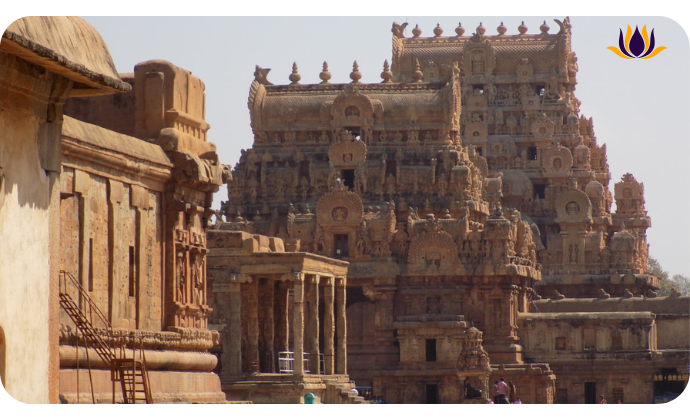The Chola Empire was one of the most significant and influential dynasties in South India, with a vibrant history that spanned over four centuries. It emerged in the 9th century CE in present-day Tamil Nadu. It reached its zenith in the 11th century CE under the rule of Rajendra Chola I.
Early History:
The Chola Empire’s origins are shrouded in mystery, with very little known about its early history. However, the first available ruler of the Chola dynasty was Vijayalaya Chola, who ascended to the throne in 850 CE. He is credited with establishing the Chola Empire and laying the foundation for its future glory.
Expansion and Rule:
The Chola Empire expanded rapidly under the rule of Rajendra Chola I, who ascended to the throne in 1014 CE. He was a prolific conqueror and led expeditions to distant lands, including Sri Lanka, the Maldives, and Indonesia. His naval expedition to Indonesia is particularly notable, as it established the Chola Empire as a significant maritime power in the Indian Ocean.
The Chola Empire’s administrative system was well-organized, with a strong central authority and a complex local governance system. The society of the Chola Empire was divided into various classes, including the Brahmins, Kshatriyas, Vaishyas, and Shudras. Tamil and Sanskrit were the languages spoken in the empire, with Tamil being the dominant language of administration and literature.
Art and Architecture:
The Chola Empire was known for its vibrant and distinctive art and architecture, characterized by intricate details and vibrant colors. Some of the most notable architectural achievements of the Chola Empire include the construction of numerous temples and the development of the Dravidian style of temple architecture. For example, the Brihadeeswarar Temple in Thanjavur, built by Rajendra Chola I, is a UNESCO World Heritage Site and a masterpiece of Chola architecture.
Cultural Contributions:
The Chola Empire made significant contributions to literature, music, and dance. Tamil literature flourished during the Chola period, with the composition of epic poems such as Silappatikaram and Manimekalai. The empire also developed the Carnatic music tradition, which remains a vibrant part of South Indian culture today.
Decline and Legacy:
The Chola Empire’s decline began in the 12th century CE. It faced increasing pressure from other South Indian dynasties, such as the Pandyas and the Hoysalas. The empire eventually succumbed to the Delhi Sultanate in the 13th century CE.
Despite its decline, the Chola Empire left behind a rich and vibrant legacy that has continued to influence South Indian culture and society to this day. The empire’s contributions to art, architecture, literature, and music are a testament to the creativity and ingenuity of the Chola people. The Chola Empire continues to inspire contemporary artists and artisans, and its legacy is celebrated in popular culture through films, television shows, and literature.
Maritime Trade: The Chola Empire was a major center of maritime trade in the Indian Ocean. The vast navy helped the empire control the seas and dominate trade routes. The Cholas traded with several Southeast Asia and the Middle East countries, including China, Arabia, and Persia.
Agrarian Reforms: The Chola rulers implemented several reforms to improve agricultural productivity and promote irrigation. They constructed several canals, tanks, and dams, which helped distribute water for irrigation.
Architecture: The Cholas were known for their architectural prowess and built several magnificent temples, palaces, and forts. The Brihadeeswarar Temple in Thanjavur, built by Rajaraja Chola I, is a UNESCO World Heritage Site and a prime example of the Chola architectural style.
Literature: The Chola period is considered a golden age of Tamil literature, with several works of poetry, drama, and prose written during this time. The most famous works include the Thirukkural, Silappadikaram, and Manimekalai.
Languages Spoken: The official language of the Chola Empire was Tamil, and it was the language of administration and literature. However, Sanskrit was also used extensively in official records, inscriptions, and religious texts.
Historical Evidence: The Chola Empire left behind several historical records in the form of inscriptions on stone, copper plates, and temple walls. These inscriptions provide valuable information on the Chola rulers, their achievements, and their policies.
In the words of historian K.A. Nilakanta Sastri, “The Chola dynasty is a unique phenomenon in the history of India, a unique blend of tradition and innovation, the past and the present, the local and the universal.” The Chola Empire remains a shining example of South India’s rich and diverse cultural heritage.



Leave a Reply